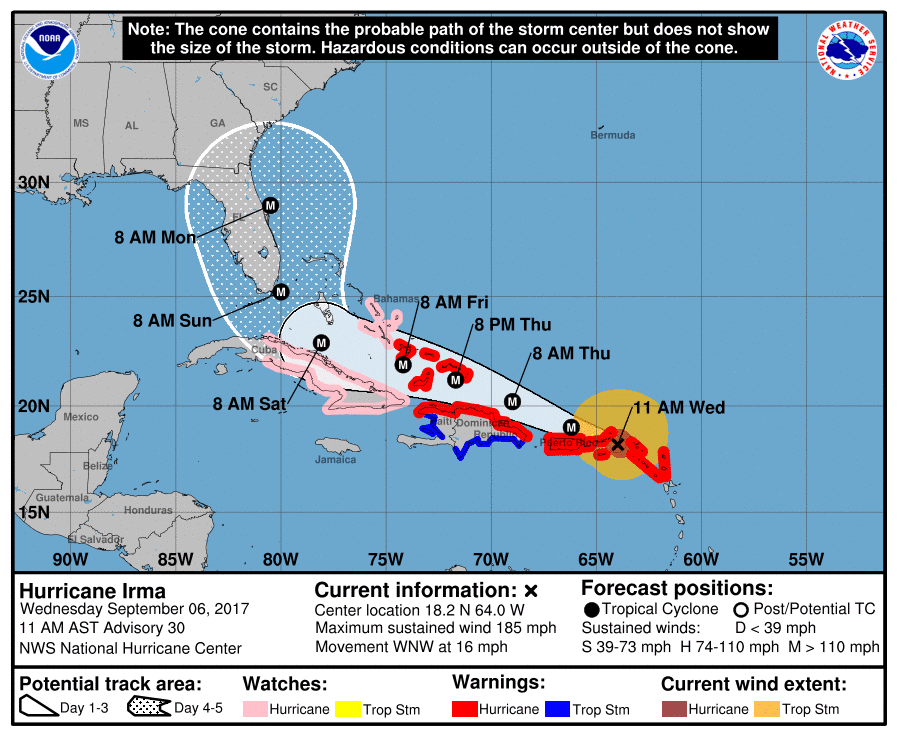2 Words When Natural Disaster Threatens Your Outdoor Campus: Be Prepared
September 06, 2017
For those of us who work day in and day out at The National Center for Outdoor & Adventure Education’s (NCOAE) headquarters in Wilmington, N.C., tropical storms and hurricanes are part of our environment.
Just last year, Hurricane Matthew paid our campus a visit — right in the middle of a three-week campus-based course. But just like the Boy Scouts, we place a great deal of stock in their motto: Be Prepared.
By the time that hurricane came roaring through, we had battened down the hatches at our headquarters facilities and moved everyone enrolled in the three-week training to the Raleigh Durham area where they finished out their course. By communicating that potential change far enough in advance, no one was surprised. Our students finished their certification program on time and were safe in doing so.
And now Hurricane Irma looms on the horizon, threatening to make landfall along our coastline sometime next week. According to the latest National Hurricane Center reports, Florida could face direct impacts, with potential paths for the storms including a move further east to encompass the Carolinas and the East Coast. Mandatory evacuations have already been ordered for the Florida Keys.
Outdoor education programs — especially those accredited by the Association for Experiential Education (AEE) — are well versed on what to do in the case of a backcountry emergency or disaster. But how do you prepare for a natural disaster on your own property?
Below are 14 tips that we undertake and suggest for other outdoor education programs facing a disaster that might affect their properties:
- Get rid of any widow makers. That includes loose branches from bushes and trees that can become instant organic missiles, causing catastrophic damage to buildings, vehicles and equipment when the storm comes roaring through.
- Flip heavy picnic tables over, which makes them more difficult to fly off and smash into buildings, etc. Portable outdoor furniture should be stored inside.
- Move all vehicles into garages or other higher ground.
- Be proactive and inform your school and private group partners, as well as your staff and students signed up for open enrollment programs that it might be necessary to cancel, postpone or relocate their particular programs.
- You should have hurricane shutters on hand for major structures, such as an administrative building. In all cases, secure windows with duct tape.
- Flooding often accompanies a big blow, so prepare for that eventuality by bottling water for drinking, cooking and washing well before the environmental event arrives on your doorstep. You’ve seen the news. Bottled water is like gold during an emergency.
- In addition to buying water, pick up bags of protein — peanut butter, GORP and bread, for example.
- And make sure you have plenty of gasoline, propane and trashbags on hand. Again, these items are better to have on hand rather than trying to scrounge them up following a blow.
- Shut down all power and water to all buildings on campus.
- Make sure you have stocked first aid kits and that they’re available when and where you may need them. They’re a must for your backcountry expeditions so why not for critical locations throughout your administrative facilities?
- Contact your insurance agent before the emergency and make he or she is aware of your potential needs after the storm. You don’t want to make contact with your agent post-storm when all her other clients are climbing up her back with requests. A call beforehand puts you and your property at the top of her mind during the storm and that can be a good thing come the aftermath.
- Clean and repair all of your Coleman and WhisperLite liquid-fuel stoves before the storm arrives. If it’s a big storm, you’re going to need them post-storm. Because in the midst of the chaos that follows, you don’t want to be messing around with stove repairs.
- Our best training tells us that if it’s a Category 4 or 5 hurricane, we’re not sticking around to ride out the disaster. We’ll scoot as far away from campus as possible. It’s got to be a Category 2 or 3 storm before we’ll even consider allowing anyone to hang around.
- If you’re going to evacuate in the face of a major storm or disaster, find a good local contact — someone who can check on the property for you while we’re gone — to give you a heads up on what you’ll face when you return. That can definitely work in our favor as you prepare yourself to head back to campus.
The best scenario for the upcoming storm might be some heavy rains and a little wind. But if the worst does occur, at least you’ll be in the best possible position to minimize the damage and handle the cleanup. Good luck!
TALK TO US
Have any further questions about our courses, what you’ll learn, or what else to expect? Contact us, we’re here to help!

Leave a comment